When Charles Tuller Garland decided to build a tennis court as part of his Moreton Hall estate he commissioned arguably the World’s finest-ever court builder: Warwickshire-born Joseph Bickley.
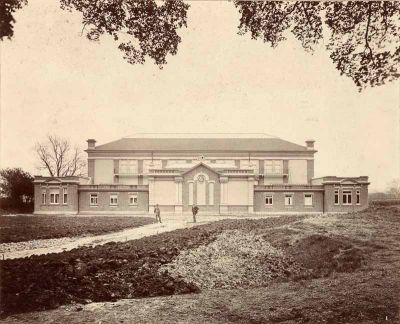
The Garland family traced their descent from the Garlands of Essex, whose coat-of-arms, "Or, three pales gules on a chief parti per pale gules and sable a chaplet and a demi-lion issuant argent", is to be seen over the main door of Moreton Hall. The Garland family crest “On a mural crown or, a lion sejant reguard argent the dexter paw resting on an escutcheon of the second charges with a garland proper” adorns the main façade of the tennis court above 1905 the date of construction.
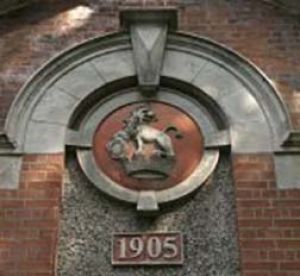
The garland crest also features on the club badge and the club takes its red and gold colours from the ‘or and gules’ of the Garland family coat of arms.
The architecture of the Hall is described by Nicholas Pevsner as "good neo-William and Mary" and the court, with its sash windows and generous overhanging eaves, follows the same style. No expense was spared, internally or externally, and “The Field" in 1913 described the building as being ahead of any other in the country in luxury of appointment.
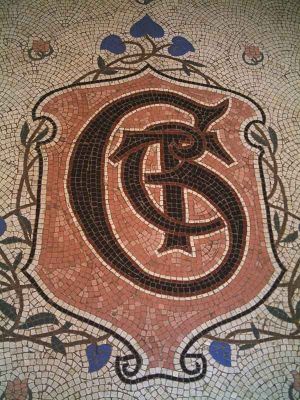
On entering the front door, the eye is met by the mosaic floor incorporating C T Garland's initials, while over the moulded archway leading to the playing areas, changing rooms and professional’s flat is the bas-relief of "Mercury and Pandora” by the great English neo-classical sculptor John Flaxman REA (1755-1826), originally designed for a silver vase to commemorate the Battle of Trafalgar. In harmony with this, are the elaborate cornices and pilasters of the dedans.
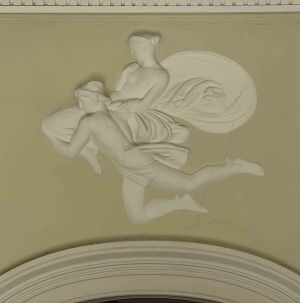
The Court itself conforms to the centuries old pattern of which the oldest surviving example is the Royal Tennis Court at Hampton Court Palace, originally built in 1530. The floor and walls are by Joseph Bickley, a specialist builder whose death in 1910 carried away his secret of a fast, true floor and a plastered wall which does not sweat in humid weather. The floor is of Bickley’s preferred terracotta colour floor and is beautifully lit from above by a magnificent glass lantern roof. "The Field" in 1913 noted how light the interior is by comparison with some other courts and comments on the speed of the floor and penthouse.
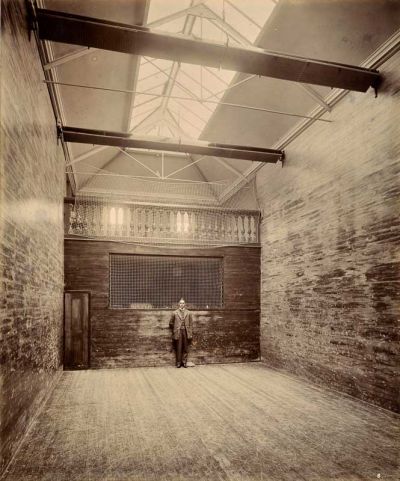
Among the features of the Court which deserves attention is the American squash court. Floored and panelled in pine, it was designed for the now unfamiliar game of squash tennis, the present-day Moreton Morrell version of which is played with a cut-down lawn tennis racket and lawn tennis ball. Here the carved wooden balusters of the spectators' gallery provide a final touch of that Edwardian elegance enjoyed by the first owner or the Court and his guests. The decline of squash tennis as a game and the standardisation of American squash courts to the more familiar wider shape has possibly left Moreton Morrell’s court as the last remaining purpose-built squash tennis court still in play anywhere in the world.
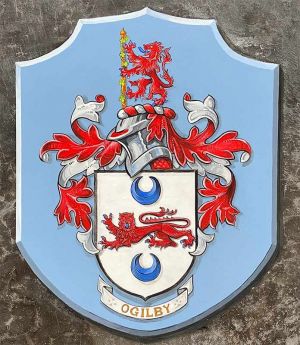
One final point of interest is the coat of arms above the net on the tennis court. This is the Ogilby family coat of arms and was added by Colonel R.J.L.Ogilby, DSO who purchased the Moreton estate in 1921.


